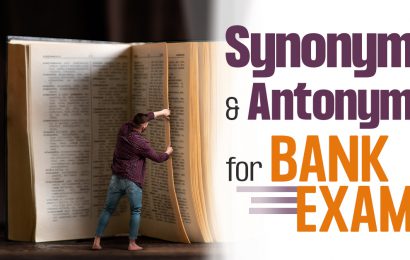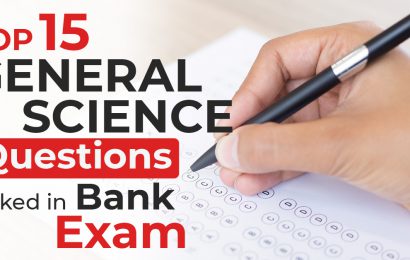Reserve Bank of India (RBI) is the regulatory body of all economic activities in India working under the finance ministry. The role and importance of RBI in the Indian economy are indispensable. To make their functions smooth, RBI recruits graduates from various streams every year. Apart from the specialists, there are two posts for which a graduate can easily apply, and these two posts are also the only way to join RBI directly. These posts are (i) RBI Assistant and (ii) RBI Grade B officer.
The posts of RBI Assistants and Grade B officers are filled with a rigorous process of 3 stage exams; These exams are conducted every year to fill the vacancies in the different branches of RBI. The work of RBI assistants is to ensure the unit’s daily operations like Ledger Maintenance, Receipts Collections, and Balance tally, etc. Still, the position of the Grade B officer is of more importance. They are responsible for the inspections, the credit appraisal system of banks, KYC AML guidelines, cash vaults functioning, and the overall security of the branch, among other essential things.
Due to the distant working environments and functions, the recruitment process is also different for both these posts. Today we will discuss the selection process in brief.
RBI Assistant Exam Pattern
First, let’s discuss the pattern of RBI Assistant to understand the exam well. The pattern of this exam is almost the same as the other bank clerk exams. The whole process of recruitment revolves around the 3 stages, i.e., Prelims, Mains, and Language Proficiency Test. From this year, one new thing is also introduced in the process; the sectional time limit means every section has a dedicated time slot to complete. You can refer to the table below:
| S. No. | Sections | No. of Questions | Allotted Marks | Maximum Time Duration |
| 1 | English Language | 30 | 30 | 20 Minutes |
| 2 | Numerical Ability | 35 | 35 | 20 Minutes |
| 3 | Reasoning Ability | 35 | 35 | 20 Minutes |
| Total | 3 | 100 | 100 | 60 Minutes |
Mains Examinations
| S. No. | Sections | No. of Questions | Allotted Marks | Maximum Time Duration |
| 1 | Reasoning | 40 | 40 | 30 Minutes |
| 2 | Numerical Ability | 40 | 40 | 20 Minutes |
| 3 | English Language | 40 | 40 | 30 Minutes |
| 4 | Computer Language | 40 | 40 | 30 Minutes |
| 5 | General Awareness | 40 | 40 | 25 Minutes |
| Total | 5 | 200 | 200 | 135 Minutes |
Important Things to Remember
- You should complete each section within the given time limit for both the prelims and mains examination.
- One thing to remember strictly is that one mark is awarded for every correct answer, but there is also a negative marking. If you tick a wrong answer, then the 0.25 mark will be deducted in both prelims and mains.
- Prelims is only the qualifying exam, and the number obtained in this section will not be included in our final merit list.
After successfully qualifying for both prelims and mains examination, the candidates need to pass one more test, which is s Language Proficiency Test (LPT). The interviewer for this stage might take your interview in the state’s local language or any official language from the constitution. This stage usually lasts for 30-35 minutes, and if disqualified at this stage, might lose the chance of selections in the bank.
Eligibility and Salary
- Applicants should be between 20 to 28 years of age. (Age relaxation of the upper age limit of 5 years for SC, ST, and Ex-army personnel and 3 years for OBC non-creamy layer and 10 years for PwD (Persons with Disabilities) and Widows/divorced women/women judicially separated and are not re-married). There is age relaxation of 3 years for the upper age limit for those with previous working experience with RBI.
- Candidates should be graduate in any stream with at least 50% marks(passing marks for SC/ST/PwD Candidates)
- Candidates should know about word processing on PC.
- Ex-servicemen must have completed their 15 years of service tenure and are now relieved for their services.
- Candidates must be proficient in the regional state language, i.e., reading, writing, and speaking.
The selected candidates are entitled to get a monthly salary of 36,000/- after all the deductions.
It is all about the RBI Assistant post and now take a look at one of the most coveted jobs in India: RBI Grade B officer. It is a national-level competitive exam organized to recruit officers for Grade B, DR- General, DEPR, and DSIM. The brief pattern of this exam is given below:
RBI Grade B Exam Pattern
The selection process of the Grade B exam is similar to any other group B examination. The method of selection is divided into three stages, (i) Prelims, (ii)Mains, and (iii) Interview. Applicants need to qualify all the stages to get into the final list. The break-down of the process is given below:
Phase 1-Prelims
| Sections | No. of Questions | Allotted Marks | Maximum Time Duration |
| Reasoning
General Awareness Quantitative Aptitude English Language |
200 | 200 | 120 Minutes |
Phase 2-Mains
| Examination | Type of Examination | Maximum Time Duration | Allotted marks |
| Paper-1
Economic and Social Issues |
50% Objective
50% Descriptive |
30 Minutes
90 Minutes |
50
50 |
| Paper-2
English Language (Writing skills) 3 Questions |
All Descriptive | 90 | 100 |
| Paper-3
Finance and Management |
50% Objective
50% Descriptive |
30 Minutes
90 Minutes |
50
50 |
Important Things to Remember
- There is no sectional time limit for the prelims examination, and you have a full 120 minutes to complete all the questions.
- Negative marking is applicable for both Phase-1 and Phase-2. ), 0.25 mark will be deducted for each wrong answer.
- The phase-2 has three different papers, and candidates should pass them individually.
- The phase-1 is a qualifier round for phase-2, so there will be no percentage addition in the final merit list.
After successfully qualifying both phases, the selected candidates also need to face the final interview round. This phase-3 is the last and the deciding round of your selection in the RBI. The interview is the most crucial stage because of its 75 marks. Yes, 75 marks can seriously impact your overall all-India rank.
Eligibility and Salary
- a citizen of India, or
a subject of Nepal or Bhutan, or
a Tibetan refugee who is permanently settled in India before January 1, 1962, or
A person of Indian origin who has migrated from either Pakistan, Burma, Sri Lanka, Kenya, Uganda, Tanzania, Zambia, Malawi, Zaire, Ethiopia, or Vietnam permanently in India.
- It is worth mentioning that candidates belonging to categories (2), (3), and (4) should possess a certificate of eligibility issued by the Government of India.
- Candidates must graduate in any stream with a minimum of 60% marks (55% for SC/ST/PwD) or Postgraduate with 55% marks (passing marks for SC/ST/PwD) as a total aggregate of all semesters.
- Candidates should be a minimum of 21 and a maximum of 30 years of age (32 to 34 if they have an M.Phil or Ph.D. degree) to apply for this examination.
Those who qualified for the exam are entitled to get the monthly remuneration of 77,000 approx after all deductions.
You can see the difference between both the exams, their salaries, their job profiles, and their recruitment process. Both these profiles offer excellent career prospects, and it’s all up to you to choose one which suits you the best.
Also Read: Top 30 General Science Questions Asked in Bank Exam


